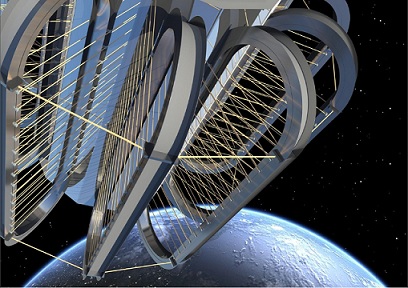Shields up for manned space exploration

SR2S focuses on the use of superconducting magnets to deflect dangerous radiation on manned missions into deep space. It has developed a variety of innovative components and technologies that are light, compact, energy-efficient and reliable enough for such journeys.
The project’s advances include cutting-edge superconducting materials, a novel approach to avoiding potentially destructive heat build-up in the magnets, and a powerful system to cool the equipment on the side exposed to the sun.
These breakthroughs are not just important for the future of manned space exploration. They also stimulate innovation here on Earth. Superconductors underpin technologies as diverse as magnetic resonance imaging scanners and particle accelerators.
Deflecting radiation with magnets
The powerful ionising radiation in space is one of the main issues to be tackled if humanity wants to head out into the starry void, says project coordinator Roberto Battiston of Italy’s National Institute for Nuclear Physics, who was appointed president of the Italian Space Agency in May 2014. On Earth, we are sheltered — the atmosphere provides radiation shielding equivalent to 3.5 metres of aluminium, in addition to the protection offered by our planet’s shadow and magnetic field.
“Astronauts in deep space will receive a hundred times more radiation than on Earth,” Battiston remarks. “This has not so far been a major limitation for space exploration, because currently astronauts don’t stay in deep space very long.” A return journey to Mars, which would involve approximately one year in deep space, would be a different matter entirely.
The concept of a magnetic shield is not new, says Battiston, but prior to SR2S it had never been explored in detail. “This is the first programme set up to tackle the various challenges of an active shield for space,” he explains. “One possible approach is to build a magnet that creates a field able to sweep the particles before they get into the craft. Obviously that’s a challenge, but at the moment it’s the most promising idea we have. SR2S is improving the technologies that are needed for this idea to become a reality.”
Superconductors offer no electrical resistance to electrical currents running through them, meaning these currents can be maintained without access to a power source — an important consideration for applications in space. That said, materials with superconducting properties only display these at very low temperatures, which means that the magnets have to be cooled.
Superconducting magnets are, of course, already widely used. However, at the moment they are too large and too heavy to be of practical use in space flight. SR2S has designed lighter, smaller components and systems based on magnesium diboride, which offers the added advantage of being far less costly than other superconducting materials.
The project has also developed the systems needed to keep these magnets running: powerful cryogenics, an innovative system to dissipate excess energy during transitions from superconductivity to normal conductivity, and an array of light, small pipes that will move heat away from the part of the hull that is exposed to the sun, towards the craft’s cooler side.
Mars matters
The project will end in December 2015, but further development is needed to prepare the technology for deployment, says Battiston. He expects this final stage to take 10 to 20 years.
And then, in terms of the radiation shielding, it’s all systems go for human exploration of our planetary neighbourhood. Without it, that’s not an option, according to Battiston. “You can’t send people to Mars just to have them die of cancer when they return to Earth,” he says.
SR2S is thus helping to ensure that we will eventually be able to boldly go where no Earthling had ventured before. “Tackling such a difficult problem is fascinating,” Battiston concludes. “It calls for new ideas and new approaches to push the technologies to the extreme. This kind of challenge is an extraordinary technology driver, which first and foremost benefits applications on Earth.”
Below artistic representations of an active, magnetic, toroidal shield used for protecting astronauts from astroparticles during the transfer in orbit viewed from the top (fig.2) and viewed in perspective (fig.3)
© SR2S / Image: Giorgina Colleoni & Valerio Calvelli
